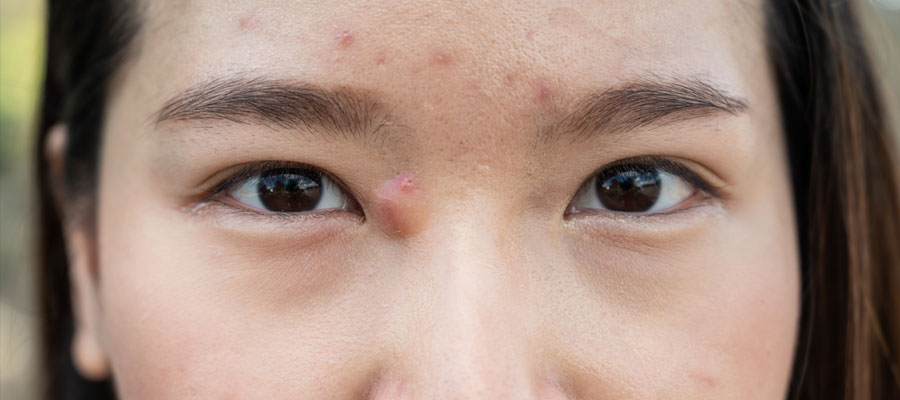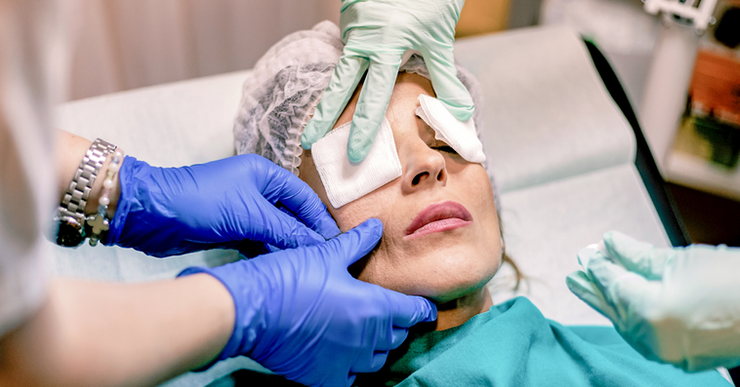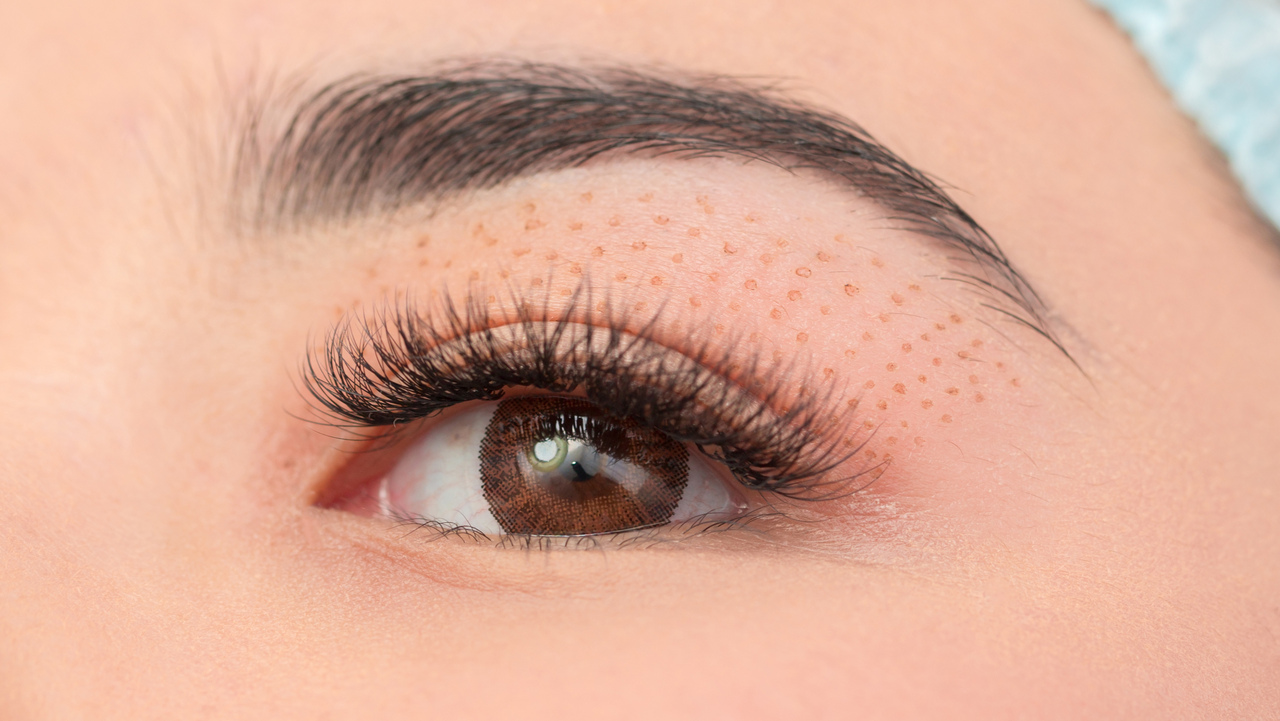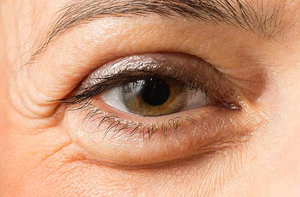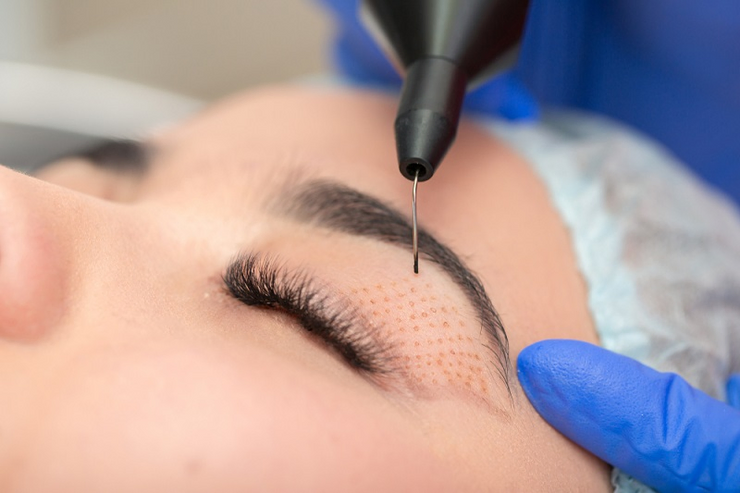Face Lumps and Bumps: The Good the Bad and the Ugly But Mostly Harmless
Have you ever noticed a strange bump or growth on your face, particularly around your eyes? Most of these growths are harmless, but some can indicate a more severe condition. In this guide, we’ll explore some of the most common types of lumps and bumps on the face and around the eyes, including cysts, warts, moles, skin tags, styes, chalazion, and Xanthelasma.
Cysts
A cyst is a small, fluid-filled sac that can develop in or on the skin or other body parts. These cysts can appear as a bump or lump on the upper or lower lid. When a cyst develops near the eye, it is called an eyelid cyst or chalazion. Check out the details below on these types of cysts.
Another type of cyst that can occur around the eyes is an orbital cyst. This type of cyst develops in the orbital cavity, the bony structure surrounding the eye. Orbital cysts can be caused by various factors, including infections, trauma, or congenital abnormalities.
Treatment for an orbital cyst depends on the underlying cause of the cyst. In some cases, the cyst may be left alone if it is not causing any symptoms. In other cases, surgery may be necessary to remove the cyst.
Anyone can develop a cyst around the eyes. Still, certain risk factors may increase the likelihood, including having a history of cysts or inflammation around the eyes, having a weakened immune system, and having a skin condition that affects the eyelids, such as acne rosacea or seborrheic dermatitis.
Warts
Warts in and around the eyes are rare, but they can occur. They are caused by a viral infection called human papillomavirus (HPV). The types of HPV that cause warts around the eyes differ from those that cause warts on other body parts.
Warts around the eyes can appear as small, rough bumps or growths on the eyelids or the conjunctiva (the thin membrane covering the eyes’ whites and the inside of the eyelids). They can also occur on the skin around the eyes and eyebrows.
Treatment options may include cryotherapy (freezing the wart with liquid nitrogen), electrocautery (burning the wart with an electric current), laser therapy, or surgical removal. Topical medications such as imiquimod or 5-fluorouracil may also be used.

People at risk of developing warts around the eyes include those with close contact with someone who has warts, people with a weakened immune system, and those with a history of skin warts. Children and adolescents are also at higher risk of developing warts around the eyes because their immune systems are still developing. It is essential to seek medical attention if you suspect a wart around the eye, as self-treatment may lead to further complications.
Moles
Moles are growths on the skin that are typically brown or black. They can occur anywhere on the body, including the face and around the eyes.
Moles develop when skin cells called melanocytes grow in clusters instead of spreading throughout the skin. Melanocytes are responsible for producing pigment, which gives colour to the skin.
The exact cause of moles is not fully understood, but they are believed to be caused by a combination of genetic and environmental factors. Exposure to ultraviolet (UV) radiation from the sun or tanning beds can also increase the number of moles on the skin.
Most moles do not require treatment unless they are causing discomfort or are changing in appearance. Sometimes, moles may need to be removed if they are suspicious of skin cancer. This can be done through surgical excision, shaving, or freezing with liquid nitrogen.
Anyone can develop moles, but people with fair skin and a history of sun exposure are at a higher risk. People with a family history of moles or skin cancer may also be at an increased risk of developing moles. It is essential to monitor moles for size, shape, or colour changes, as these changes may indicate the presence of skin cancer.
Skin Tags
Skin tags are small, soft growths that typically occur on the neck, armpits, or groin but can also occur on the face and around the eyes.
The exact cause of skin tags is unknown, but they are thought to develop due to friction or rubbing of the skin. Hormonal changes during pregnancy and obesity may also increase the risk of developing skin tags.
Skin tags are generally benign and do not require treatment unless they are causing discomfort or are in a location where they are easily irritated. Treatment options include cutting, freezing, or burning the skin tag off or using electrocautery to remove it. However, these methods should only be done by a healthcare professional.
There are no known risk factors for developing skin tags, but they are more common in older adults and people who are obese or have diabetes. They also tend to run in families, suggesting a possible genetic component.
Stye
A stye is a red, painful lump that appears on the eyelid. It is caused by an infection of the oil glands in the eyelids, known as the meibomian glands.
The most common cause of a stye is the presence of bacteria, specifically Staphylococcus aureus, which can infect the eyelids’ hair follicles or oil glands. Styes can also occur due to inflammation and blockage of the meibomian glands and poor hygiene, stress, and hormonal changes.
The treatment of a stye depends on the severity of the infection. Mild styes may go away independently within a few days, while more severe cases may require medical treatment. Home remedies such as warm compresses and gentle massage of the affected area can help alleviate pain and inflammation. Over-the-counter pain relievers may also be used. Sometimes, a doctor may prescribe antibiotics to help clear the infection.
Anyone can develop a stye, but certain factors can increase the risk of developing one. These include poor hygiene, using old or contaminated makeup, and having a pre-existing condition such as blepharitis or diabetes. People who wear contact lenses or have a weakened immune system are at an increased risk of developing styes.
Chalazion
A chalazion is a small, painless bump on the eyelid, typically on the inner surface. It is caused by the blockage of a tiny oil gland in the eyelid called a meibomian gland. Oil and other fluids can accumulate when the gland is blocked, causing the bump to form.
The following are some common causes of chalazion:
- Poor hygiene: Infrequent cleaning of the eyelids can cause debris and oil to accumulate, leading to clogged glands.
- Blepharitis: This is an inflammation of the eyelid that can cause the glands to become blocked.
- Skin conditions: Certain skin conditions, such as rosacea or seborrheic dermatitis, can lead to the formation of chalazia.
- Hormonal changes: Some hormonal changes, such as those that occur during puberty, can increase the risk of developing chalazia.
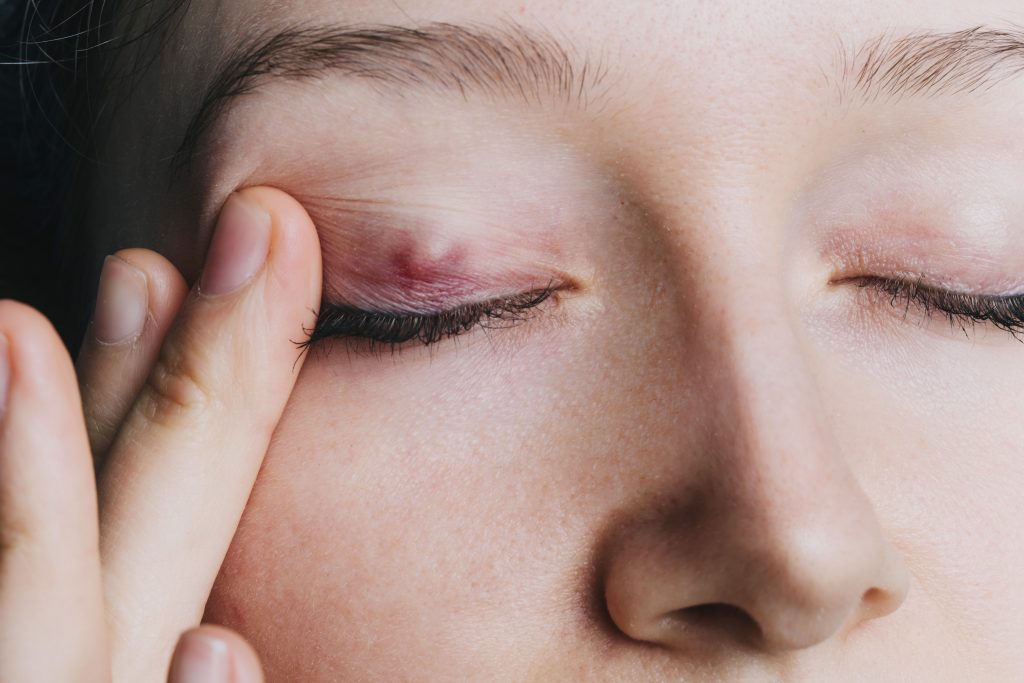
Treatment for chalazion typically involves warm compresses and gentle massage to help open the blocked gland and promote drainage. A doctor may need to drain the chalazion through a small incision in more severe cases. Occasionally, antibiotic eye drops or ointments may be prescribed to treat any accompanying infection.
Anyone can develop a chalazion, but some people may be at higher risk, including those with a history of previous chalazia, people with chronic blepharitis, and those with skin conditions such as rosacea or seborrheic dermatitis. Additionally, hormonal changes during puberty may increase the risk of developing chalazia.
Xanthelasma
Another type of bump on the eyelids which you can read more about here in one of our previous blogs on Xanthelasma.
In conclusion, lumps and bumps on the face and around the eyes can range from harmless to severe. If you notice any new or changing growths on your skin, it’s essential to have them evaluated by an oculoplastic surgeon to rule out any underlying health issues. Early detection and treatment can ensure the best possible outcome.
At Clinica Fai, we use a combination of Observation, Medical, Surgical and Plasma Plexr PRO (an innovative technique using plasma technology) to treat lumps and bumps in and around the eyes. Our trained oculofacial plastic surgeon, Dr Shubhra Goel, is a specialist who uses non-surgical procedures to treat these conditions.

